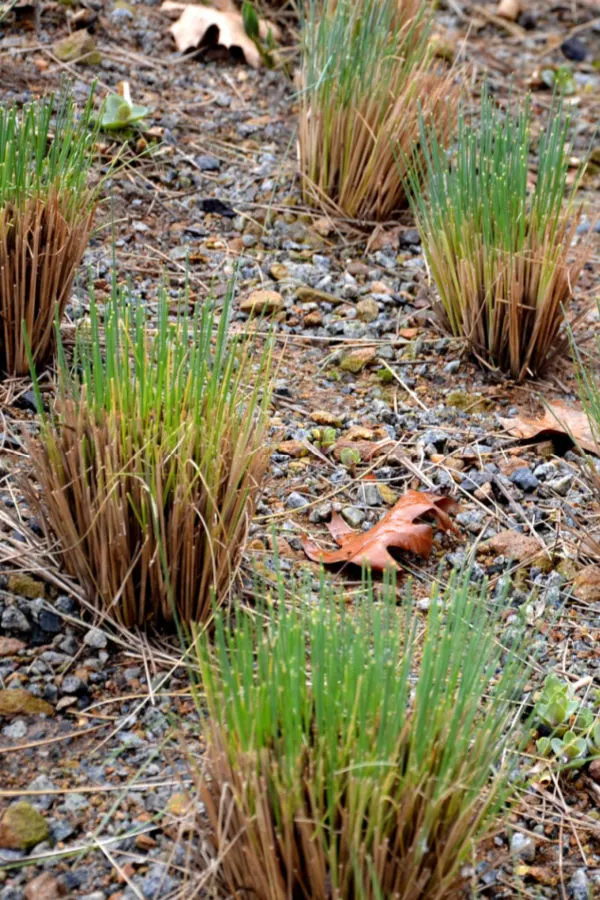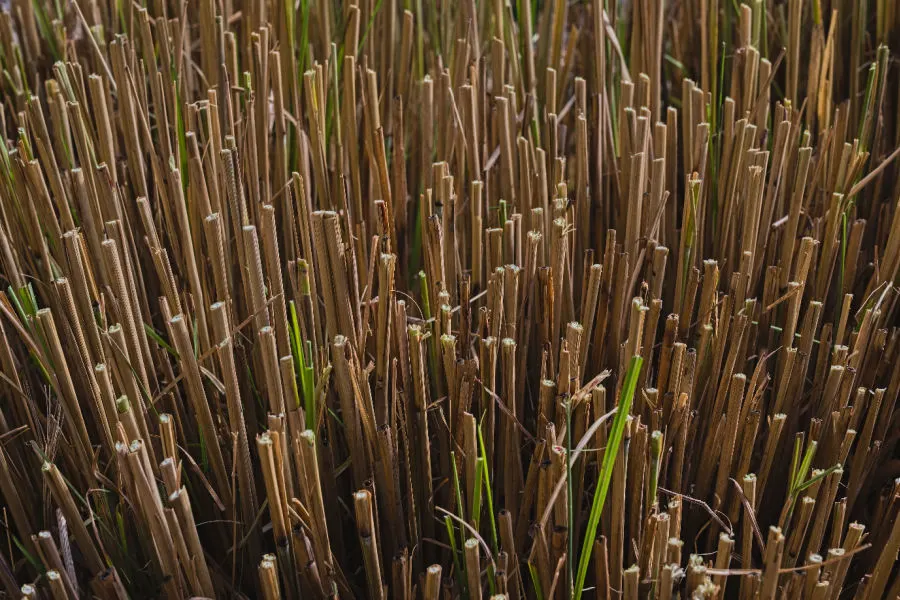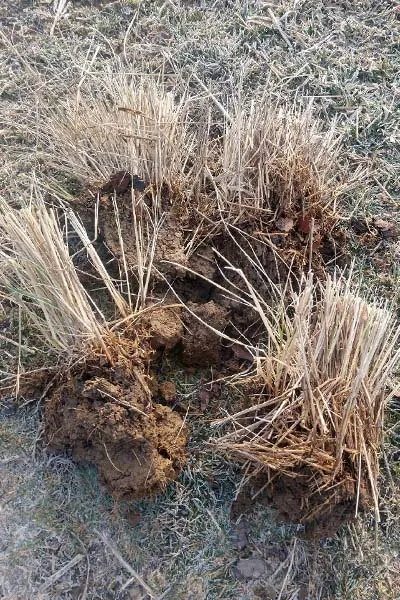There is no better time to cut back and divide ornamental grasses than in late winter and early spring. Not only can it keep your grasses manageable, it can also create all kinds of new grass transplants to use all over your yard.
By late fall to early winter, ornamental grasses go completely dormant. By the time late winter and early spring rolls around, grasses that have been left up often start to look quite bleak. And because of their hardiness, it is the perfect time to clean them up before they begin to grow!
As with all of our podcast and corresponding articles, you can listen in below to the podcast – or read on for the entire article full length article. As always, all of our podcast and article resource links are provided at the end of each article.
Ornamental Grass Care – How To Cut Back & Divide Ornamental Grasses
Ornamental grass varieties are a great addition to any landscape. They have wonderful color and texture, and bring interest the whole year round. Especially when left in tact through late fall and early winter.
Although you can cut back grasses in the fall, leaving them up through the winter is actually a great idea. It not only adds interest, but also provides valuable protection for birds and animals struggling to make it through the harsh winter cold. The grasses make for great nesting materials for birds too. They can also serve as a bit of a wind and snow break.
As soon as your ground thaws and the weather is warm enough to warrant being outside, you can head out to cut your grasses back. A cold snap or a hard freeze will not kill plants as long as they are in the ground and dormant.

Getting to them early in the year before spring hits in full force can be quite advantageous. For one, it gets them ready to grow fast. But it also allows you to get ahead of the game before mowing, planting and garden season hits full on.
Although you can burn grasses back at this point without harming them, it can be extremely dangerous to nearby structures and plants. It is also illegal in many a locations to open burn, and if it spreads, it can cause a lot of damage in quick fashion. With that in mind, it is far safer to simply cut them back.
The Tools Of The Trade – How To Cut Back & Divide Ornamental Grasses In Early Spring!
Grasses can be cut back all the way to ground level, but for most varieties it is better to leave a bit of the old growth in place. Not only will it keep a bit of interest in the landscape, it also provides protection for roots, and helps anchor new shoots in the spring.
For small mounding grasses, cut the stand back to a few inches. For larger grasses that grow three or more feet, leave four to six inches remaining.
There are several great options when it comes to selecting a tool for cutting back your grasses. The best choice really depends on the size of the plant. For small mounding grasses, a good pair of hedge shears works well. The longer blades of the shears get under the low mounds easily to cut away the top.

For larger grasses, you can use hedge shears, a battery powered reciprocating saw or electric or batter powered hedge trimmers. If they are exceptionally large, thick stranded grasses, a chainsaw works wonders too. The most efficient and best option are a battery powered hedge trimmers. There is no worry of cutting a cord, and they cut smooth and fast!
Dividing – How To Cut Back & Divide Ornamental Grasses In Early Spring!
Mature plants sometimes require a bit of extra maintenance to keep them looking good. And that is where dividing your plants every so often comes into play. Dividing large clumps helps keep plants healthy for years. It is also a great way to create free new plants for your landscape.
Ornamental grass clumps grow from the inside out. That means new growth is always be on the outside ring of the plant. After a few years, you may notice the middle area beginning to die off. When this happens, it is time to dig your plant up to prune the dead portions out.
On average, ornamental grasses need to be dug out every three to five years to keep them well maintained. They can certainly go longer, but it becomes a more difficult chore.
Creating New Plants – How To Cut Back & Divide Ornamental Grasses In Early Spring!
When digging up to trim out dead growth, or to create new transplants, start by digging up the entire ball of grass. Begin by digging out the entire root ball of the clump. If it is too large, it can be dug out in sections.
Remove and discard the “dead” center portion to the compost pile. Only utilize sections of the newer, outer growth area for replanting. Not only do the outer edges have younger root sections, they are also easier to work with.

You can create quite a few new starts from an old clump. A sharp shovel or the reciprocating saw makes quick work of splitting them up. An axe also works great for large plants with very thick roots. The larger the slice of roots, the larger your first year plant will be.
Planting transplants couldn’t be easier. Simply dig a hole for each new clump and cover around with soil. Simply replant wherever needed and as spring warms, the plants will shoot up new growth. In fact, they do not require any additional soil amending or fertilizers at all.
Grasses truly are low maintenance, and just one more reason they are so good to have in your landscape. You will be surprised how many “new” plants you can start from an old clump!
Tips To Remember – How To Cut Back & Divide Ornamental Grasses In Early Spring!
- Cut back in the spring is best
- Cut large grasses about 6 inches, meanwhile, smaller & mounding grasses can be cut flush or near flush to the ground
- Remove center portions – they die off
- The size of your new plant will correspond to root size
- Plant in soil, no soil amending or fertilizers are needed
Resource & Affiliate Product Links –
Podcast / Article Links
Feather Reed Grass – How To Grow The Perfect Low Care Ornamental Grass!
The Best Ornamental Grass Varieties To Plant For Easy Care & Big Interest!
How To Care For Ornamental Grasses In The Fall – To Cut Or Not To Cut!
8 Simple Garden Tools & Gadgets Every Gardener Should Own
Podcast Affiliate Product Links
VIVOSUN 20″ Cordless Hedge Trimmer, 20V Electric Bush Trimmer
OARA Garden Hedge Shears for Trimming
Follow Our Facebook Page For Even More Great Tips! Simple Garden Life Facebook Page
Simple Garden Life is a website dedicated to keeping gardening fun, simple and enjoyable! We publish two new articles each week along with a new garden podcast episode every two weeks. This article may contain affiliate links.
